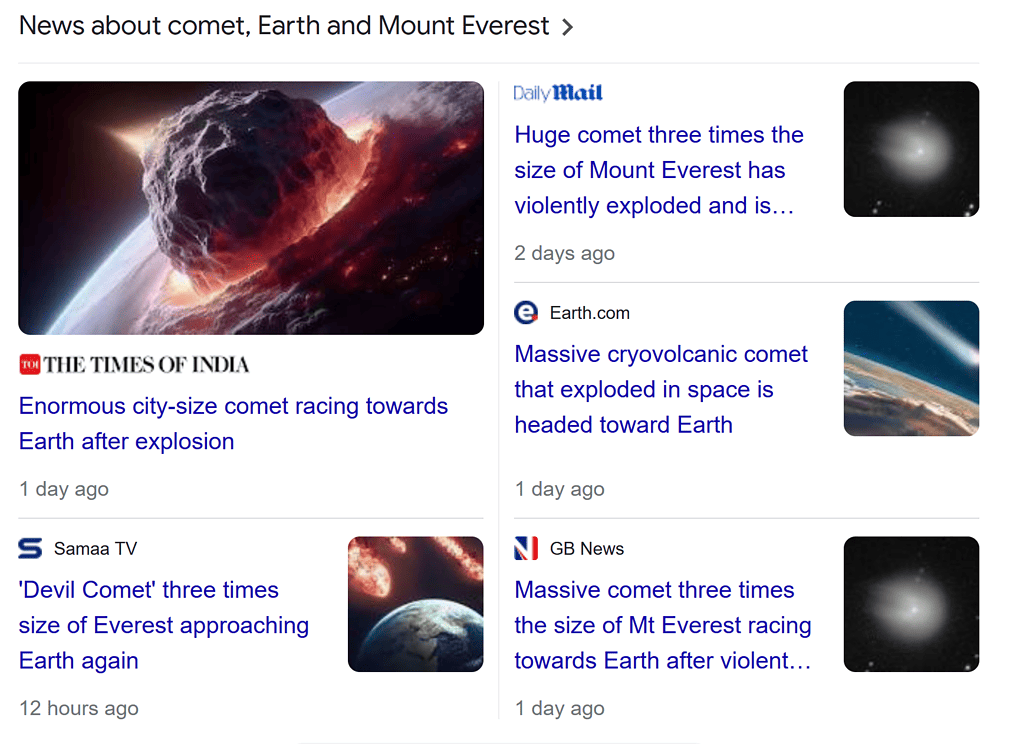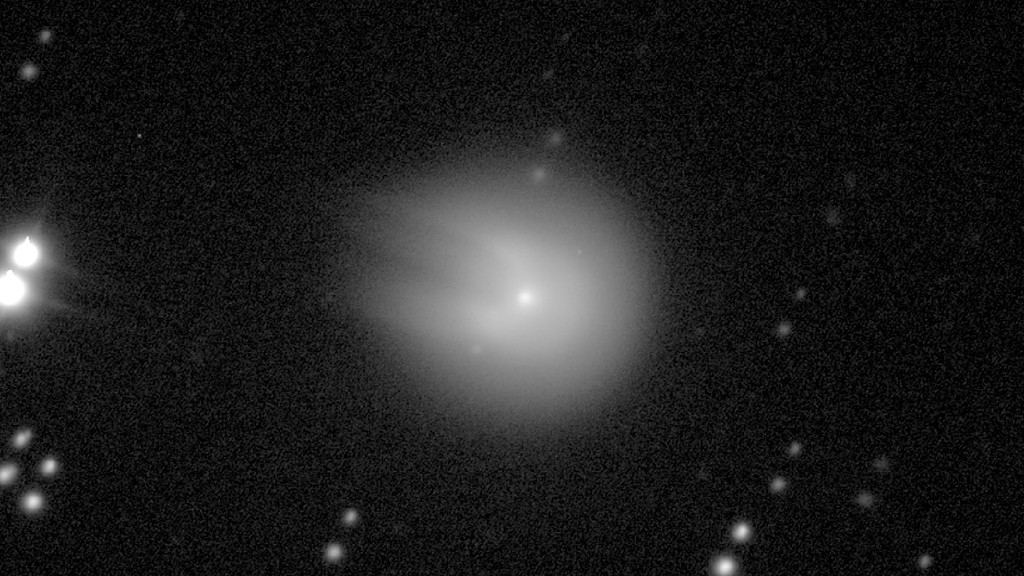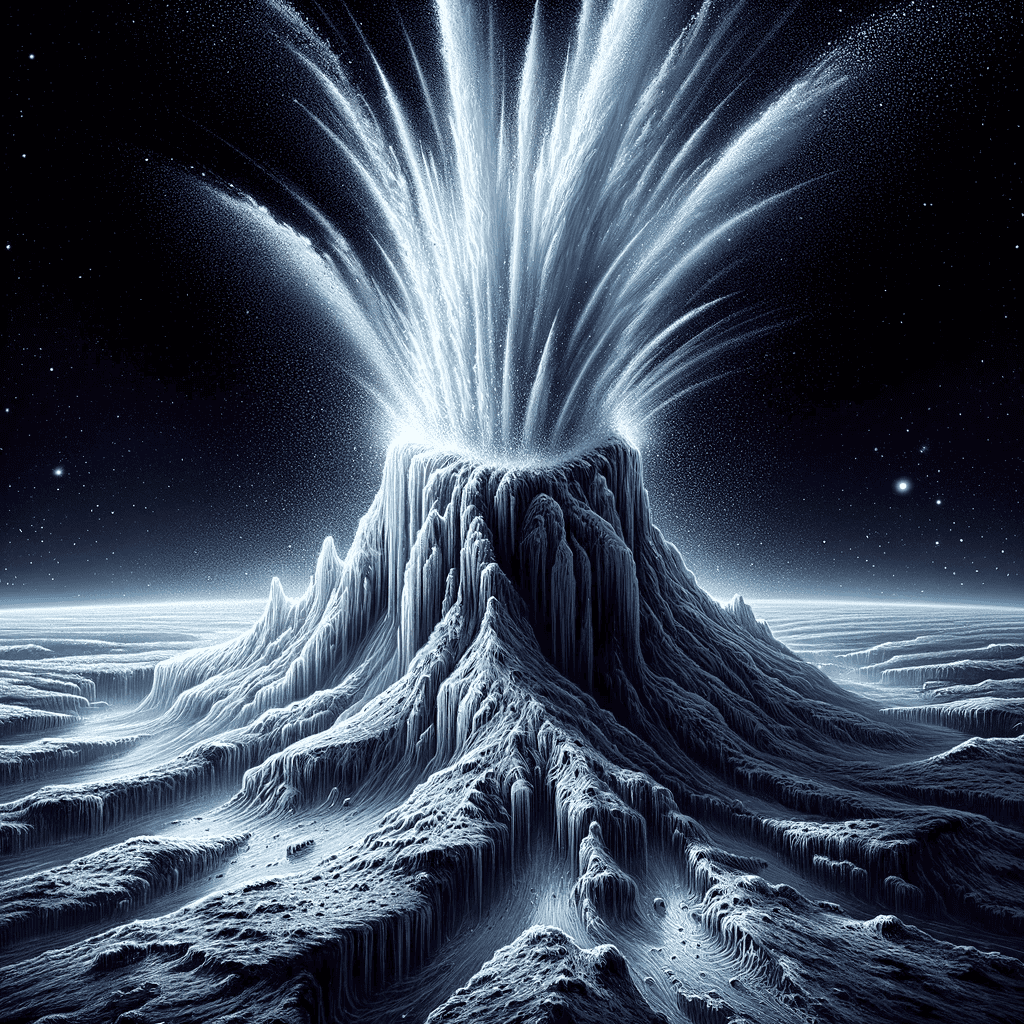
An embarrassing barrage of media coverage would have you think that some weird, massive comet is on its way to hit us. It’s not. It’s going to pass at a whopping 224 million km from Earth, more than the distance between the Earth and the Sun.
It’s a fascinating, Halley-type comet that should not worry you in the slightest. Here’s why it’s still really cool, though.
The comet is called 12P/Pons–Brooks. It’s a periodic comet with an orbital period of 71 years, meaning it does one circuit around the sun in 71 years. It’s also locked in resonance with Jupiter: its orbit lasts exactly six times more than Jupiter’s.
The comet is a volcanic one — cryovolcanic, to be specific. In other words, it has ice volcanoes that erupt water. Like volcanoes on Earth erupt hot lava, these frozen volcanoes erupt water (which is technically hotter than the surrounding ice). Recently, one eruption created a cloud of ice particles and gas that sort of looks like a pair of horns. Some said it sort of looks like the Millennium Falcon. Sure, maybe it does, but it’s not a “devil comet”, that’s for sure.

The comet 12P/Pons–Brooks has a solid nucleus that’s just around 30 kilometers (18.6 miles) in diameter. It’s also one of the brightest comets from Earth, and because it’s so regular, astronomers (and regular folk) are interested in it as they can observe it reliably. It will pass by Earth at the closst distance on 2 June 2024. But it’s no danger to us.
At its closest distance, the comet will be at 1.55 Astronomical Units from Earth — with one Astronomical Unit (AU) being equal to the distance from the Earth and the Sun. So it’s going to be 50% farther than the Sun. It’s not a close encounter. It’s not going “towards” Earth. It’s going to be closer to Earth than it is now, sure, but that only matters for skywatchers who may get a treat in June 2023.
For researchers, 12P/Pons–Brooks is interesting because comets are a sort of cosmic laboratories where you can study the primordial state of the solar system. Cryo comets form in the frigid, outer regions of the solar system. The temperatures there are so low that mixtures of ice, ammonia, methane, and other frozen volatile gases can freeze up along with dust and rock particles.
When a cryovolcano on one of these comets erupts, the material it ejects may be primordial in nature. It may be the very stuff that formed the comet in the early days of the solar system. Analyzing this ejection can help researchers understand the building blocks of the solar system. There’s even a theory that comets played a role in delivering water and organic compounds to the early Earth, essentially seeding our planet for life.

12P/Pons–Brooks is not the only such comet that researchers are keeping an eye on. Several other comets could hold important clues and astronomers are currently studying them with telescopes. After making its “close” flyby, this comet will then be catapulted away and won’t make another comeback until the year 2095.
Of course, astronomers are also keeping an eye on potentially hazardous objects like asteroids or comets. Our ability to detect even small objects is not perfect, but it’s pretty good — and it’s about to get much better with the launch of the Vera C. Rubin Observatory. The observatory aims to map the night sky in unprecedented detail, capturing wide-field images that cover the entire available sky every few nights. This frequent and comprehensive coverage will allow the observatory to detect moving objects, such as asteroids and comets, with great precision.
Beyond the hype that some media make from this comet, 12P/Pons–Brooks is an interesting celestial body that could hold important cosmic clues. It’s not something to be feared.






